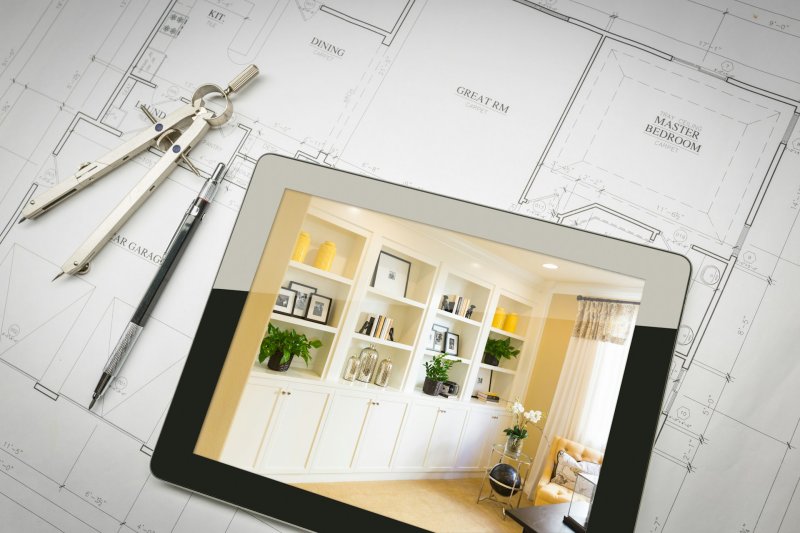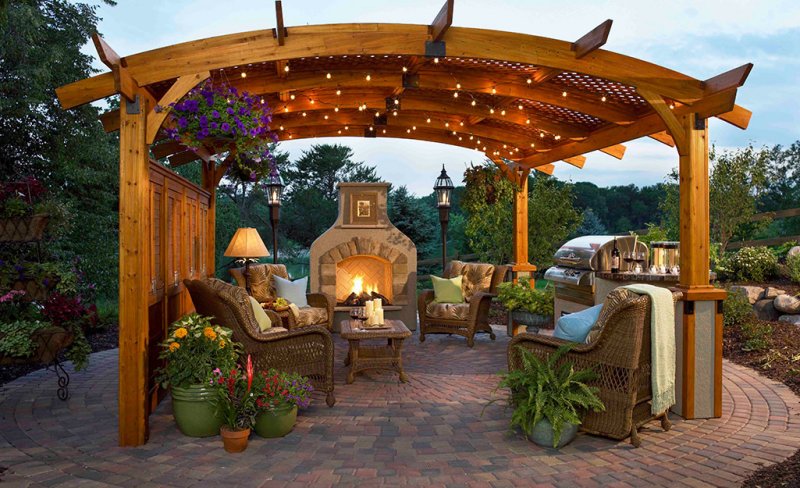
In an era where property prices continue to climb, moving to a larger home often feels like an unattainable dream for many. For families outgrowing their current living arrangements, or individuals simply craving more space, a home extension presents an attractive alternative. It offers the chance to tailor your home to your evolving needs, add significant value, and avoid the considerable costs and upheaval associated with relocating.
However, the perceived expense of home extensions can be daunting. Tales of spiralling budgets, unexpected delays, and unforeseen complications often deter homeowners before they even begin. Yet, with careful planning, informed decision-making, and a strategic approach, it is entirely possible to achieve a beautiful, functional, and value-adding extension without emptying your savings.
This comprehensive guide explores key cost-effective strategies to ensure your home extension project remains within budget, transforming your living space efficiently and affordably.
1. Master the Planning and Design Phase: The Blueprint for Savings
The most significant savings in any extension project are often secured long before the first brick is laid. Meticulous planning and astute design choices lay the foundation for a cost-efficient build.
- Define Your Needs and Set a Realistic Budget: Before you even think about design, clearly articulate why you need the extra space. Is it an additional bedroom, a larger kitchen, a home office, or a brighter living area? Once you have a clear purpose, establish a realistic budget, including a crucial contingency fund (ideally 10-20% of the total project cost) for unforeseen issues. This budget will guide all subsequent decisions.
- Embrace Simple Design: Complex architectural features, multiple rooflines, quirky angles, and curved walls significantly inflate construction costs due to increased labour and material waste. Opt for simple, rectangular footprints and standard roof designs (e.g., flat or mono-pitch) where possible. A minimalist design can still be stunning and functional, often blending more seamlessly with the existing structure.
- Optimise Existing Space First: Could you reconfigure your current layout to meet some of your needs? Moving internal walls, opening up spaces, or re-purposing underutilised rooms can sometimes negate the need for a full extension, or reduce its required size, offering substantial savings.
- Consult Professionals Wisely: While engaging an architect or experienced designer incurs an upfront fee, their expertise can save you far more in the long run. They can identify cost-saving design solutions, navigate planning permissions, and ensure structural integrity. Look for professionals with a track record of delivering projects within budget and request a detailed breakdown of their fees. A good design maximises space and light without over-extending the budget.
- Understand Planning and Building Regulations: Research local planning policies and building regulations early in the process. Non-compliance leads to costly delays, redesigns, and potential demolition. Permitted development rights can sometimes allow extensions without full planning permission, potentially saving time and money, but strict guidelines must be adhered to.
2. Smart Material Selection: Quality Without Extravagance
Materials typically account for a substantial portion of an extension's cost. Strategic choices here can yield significant savings without compromising quality or durability.
- Standard vs. Bespoke: Where possible, opt for standard-sized windows, doors, roof trusses, and kitchen units. Custom-made items are inherently more expensive due to design, manufacturing, and installation complexities. Check for off-the-shelf options that fit your aesthetic.
- Reclaimed and Salvaged Materials: For certain elements, such as bricks, timber beams, or even decorative tiles, sourcing reclaimed materials can be incredibly cost-effective and add unique character. Always ensure they are structurally sound and fit for purpose.
- Local Sourcing: Purchasing materials from local suppliers not only supports the regional economy but also reduces transport costs and your carbon footprint. Inquire about bulk discounts if you have a large order.
- Prioritise Durability over Luxury: While high-end finishes are appealing, focus on materials that offer longevity and good performance for structural elements. For visible finishes, consider durable, aesthetically pleasing alternatives to the most expensive options. For instance, engineered wood flooring might offer similar benefits to solid hardwood at a lower price point.
- Embrace Energy Efficiency: While high-performance insulation, double or triple glazing, and efficient heating systems might have a higher initial outlay, they lead to substantial long-term savings on energy bills, making them a true cost-effective investment over the life of your home.
3. Efficient Construction Management: Maximising Your Budget
The construction phase is where careful planning translates into tangible savings, primarily by minimising waste, delays, and reworks.
- Choose the Right Builder: Obtain at least three detailed quotes from reputable builders. Don't automatically go for the cheapest; assess their references, experience, communication style, and ensure their quote is comprehensive, covering all aspects of the project. A clear, fixed-price contract with a payment schedule linked to milestones is essential.
- Strategic DIY Contributions: Be honest about your skills and time availability. While undertaking structural work yourself is ill-advised and potentially dangerous, tasks like painting, decorating, laying certain types of flooring, or landscaping the surrounding area can save thousands in labour costs. Only commit to tasks you are genuinely confident in completing to a professional standard, as rectifying poor DIY work can be more expensive than hiring a professional initially.
- Minimise Disruptions and Delays: Time is money on a construction site. Ensure clear communication with your builder, make decisions promptly, and ensure materials are on-site when needed. Avoid changes once work has commenced, as these invariably lead to extra costs and delays.
- Waste Management: Discuss waste disposal with your builder. Efficient management and recycling of construction waste can reduce skip hire costs. Some materials, like clean soil, may even be useful elsewhere or able to be donated.
4. Exploring Alternative Extension Types
Sometimes, a full-blown brick extension isn't the only or most cost-effective path to more space.
- Loft Conversions: Often one of the most cost-effective ways to add significant space (an extra bedroom, bathroom, or home office) as the existing roof structure and foundations are already in place. The primary work involves reinforcing the floor, installing stairs, insulation, and finishes.
- Garage Conversions: If your garage is primarily used for storage, converting it into a habitable room (e.g., an office, playroom, or utility room) is generally cheaper than building a new extension, as the main structure already exists.
- Conservatories/Orangeries: While providing light-filled space, traditional conservatories are typically cheaper than a brick extension. However, consider their thermal performance; a well-insulated, year-round usable conservatory or orangery will be more expensive but also more valuable.
- Garden Rooms/Outbuildings: If you need a separate workspace, gym, or studio, a detached garden room can be a highly cost-effective solution, often not requiring the same level of planning permission or complex foundations as an attached extension.
5. Managing Finishing Touches and Furnishings
It’s easy for budgets to blow out during the final stages. Thoughtful choices here can keep expenditure in check.
- Prioritise Essentials, Defer Luxuries: Get the core structure and functionality right first. High-end fixtures, elaborate lighting schemes, or bespoke cabinetry can often be added or upgraded at a later date when funds allow.
- DIY Decorating and Simple Fit-Outs: Painting, basic shelving, and installing simple light fixtures are manageable DIY tasks that save on labour costs.
- Smart Shopping for Furnishings: Look for sales, use online marketplaces for second-hand items, or consider upcycling existing furniture. Not every piece needs to be brand new to create a beautiful space.
- Cost-Effective Lighting: LED lighting is energy-efficient and comes in a vast range of styles. Strategic placement of fewer, well-chosen light fixtures can be more effective than numerous, poorly placed ones.
6. Financial Planning and Contingency
Finally, robust financial planning is the bedrock of a stress-free, cost-effective extension.
- Detailed Budget Tracking: Use spreadsheets or budgeting apps to meticulously track every expense, comparing it against your original budget. This allows you to identify overspends early and adjust.
- The Crucial Contingency Fund: Reiterate its importance. Unexpected issues—whether it’s finding damp, needing extra structural support, or encountering an unknown utility pipe—are almost guaranteed. Having 10-20% of your budget reserved for these eventualities prevents panic and debt.
- Securing the Right Finance: If you need to borrow, explore all options: remortgaging, a secured loan, or an unsecured personal loan. Compare interest rates, repayment terms, and associated fees carefully.
Conclusion
Embarking on a home extension is a significant undertaking, but it doesn't have to be a financially crippling one. By adopting a proactive, strategic, and informed approach, homeowners can navigate the complexities of design, planning, and construction to create valuable, functional, and beautiful new spaces without overspending.
From embracing simple designs and making smart material choices to effectively managing the build and having a robust financial plan, every decision contributes to the overall cost-effectiveness. The ultimate goal is not just to add square footage, but to enhance your home and lifestyle in a way that is both sustainable and financially sound, proving that a dream extension can indeed be an affordable reality.







0 Comments
Post Comment
You will need to Login or Register to comment on this post!